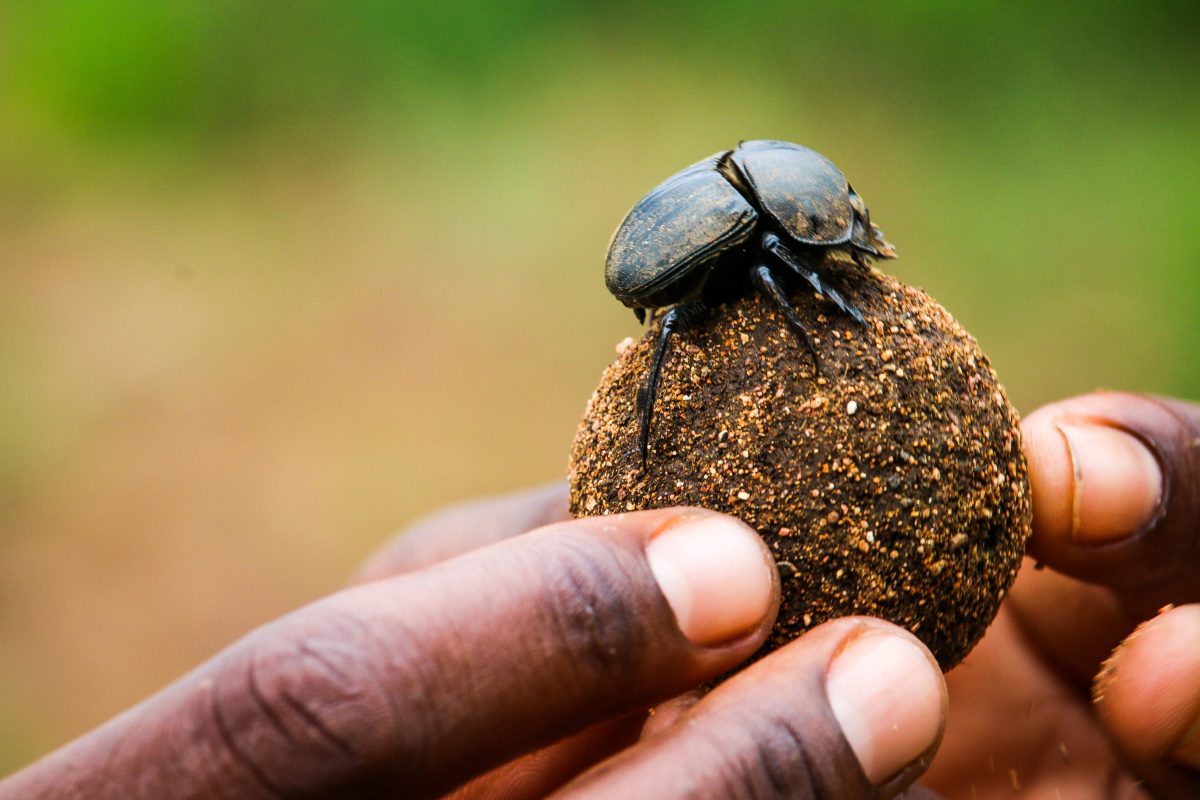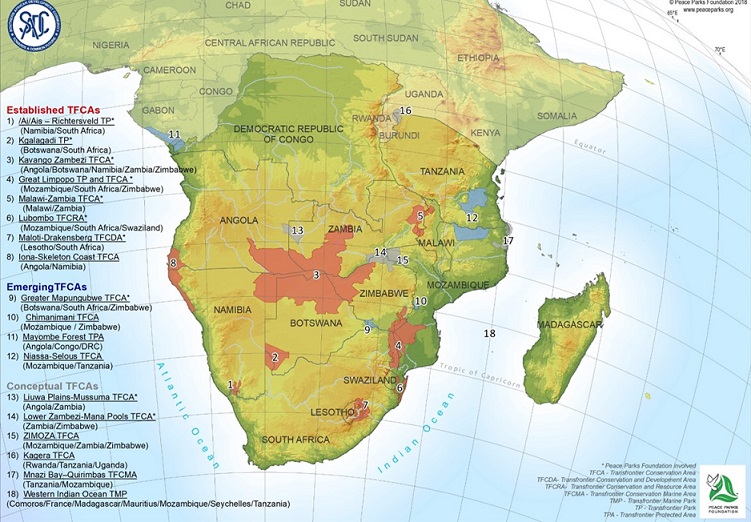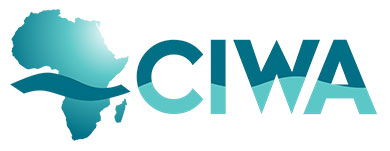Protecting biodiversity through transboundary solutions in Africa
Posted in : Latest on 20 May 2021
This Saturday, May 22, marks Biodiversity Day 2021, under the slogan, “We’re part of the solution #ForNature.” The slogan is a continuation of the momentum generated last year under the over-arching theme that our solutions are in nature itself, underscoring that biodiversity remains the answer to sustainable development challenges. In this blog, we turn our attention to the power of Transfrontier Conservation Areas (TFCAs) and their goals to conserve ecosystems and support biodiversity.

African elephants are masters of their surroundings. By picking up on ultra-low weather frequencies, elephants can hear a rainstorm 150 miles away. And would you believe some matriarch elephants can remember the exact location of waterholes as far back as 30 years? African elephants also play an important role in balancing natural ecosystems, maintaining plant populations, and biodiversity.
Biodiversity, short for biological diversity, refers to the inter-connectedness of species, ecosystems, and genes, and their interactions with the environment.
Biodiversity: a vital resource worth fighting to protect
In Southern Africa, biodiversity contributes significantly to national economies. One measure of this is tourism’s contribution to a country’s Gross Domestic Product (GDP). In Mozambique, for example, tourism makes up about 8% of its GDP; in South Africa, 9%, and in Namibia, 11%. And while not all tourism is related to nature, for these countries with strong wildlife economies, a large percentage of their annual GDP is.
Biodiversity also contributes to the livelihoods of some of Africa’s poorest communities by providing food, fuel, medicine, water, and jobs. Freshwater biodiversity, for example, is key to food security within the four countries sharing Lake Tanganyika: Tanzania, the Democratic Republic of the Congo, Burundi, and Zambia. Fish account for 25-40 percent of the total animal protein supply in these countries. Therefore, unsustainable fishing and water pollution not only threaten the lake’s freshwater biodiversity, but also the food security of millions of people. And as an employer, wildlife-based tourism is big. Forthcoming analysis from the World Bank shows that in the Zambian National Parks of Lower Zambezi and South Luangwa, tourism in protected areas generates jobs for 14 percent and 30 percent of the total working age populations, respectively. Across Africa, the wildlife economy employs about 10 million people. Prior to the COVID-19 pandemic, tourism jobs were on the rise, forecasted to increase to 23 million this decade, many of them nature-based.
Transboundary solutions to biodiversity protection
How can we ensure that countries work together to retain biodiversity’s richness and address threats to it and its losses?
Transboundary approaches to natural resource management – specifically, Transfrontier Conservation Areas (TFCA) – provide opportunities for effective protection and management, while also contributing positive and sustainable co-benefits for local populations. TFCAs are ecological regions that straddle the boundaries of two or more countries and include at least one of the following: a national park, game reserve, forest reserve, communal lands or conservation and tourism concession areas. In TFCAs, natural resources are collaboratively managed by the governments and authorities involved.
Leveraging transboundary approaches for water management
The World Bank, through its Cooperation in International Waters in Africa Program (CIWA), works to strengthen the power of TFCAs to support management of transboundary water and biodiversity to contribute toward resilient livelihoods.
In these Transfrontier Conservation Areas, transboundary water bodies are at the heart of sustaining biodiversity. CIWA’s work to understand and leverage water’s role and relationship to nature is a top priority and allows us to robustly support long-term conservation programs.
Erwin De Nys, CIWA Program Manager
Many TFCAs in Africa encompass critical upstream parts of key river basins, including the Kavango-Zambezi (KAZA) and Great Limpopo TFCAs. Economic activity in these upstream areas impacts water production and makes TFCAs, as a governance structure, an important ally and partner in sustainable water resources management and biodiversity monitoring.
In the Great Limpopo TFCA, which straddles Mozambique, South Africa, and Zimbabwe, sits the Pafuri-Sengwe Node, a geography highly susceptible to both drought and poverty. These threaten livelihoods and leave communities less equipped to support biodiversity protection. Through CIWA’s Southern Africa Drought Resilience Initiative (SADRI), the World Bank supports work to identify and improve these conditions through a deeper understanding of the water resources available and how they are being utilized. Activities include assessments to determine the extent of groundwater aquifers, aboveground water systems, and current water demand and usage rates, especially among local communities. The work will also evaluate governance practices that are in place to manage water resources. The over-arching goal is to support more climate resilient communities that are better equipped to plan for and mitigate drought, contributing to a decrease in biodiversity loss.

In South Africa and Botswana, studies are underway to understand the linkages among groundwater quality, groundwater levels, and biodiversityof the shared Khakea/Bray Transboundary aquifer. This work is led by the South African Development Community-Groundwater Management Institute (SADC-GMI) in collaboration with the Aquatic Systems Research Group (ASRG) at the University of Venda and the Institute for Groundwater Studies at the University of the Free State. Ultimately, the goal is to foster joint management of this and other transboundary ecosystems in the SADC region.
Protection through cooperation
TFCAs work because of their regional collaboration and shared goals to improve biodiversity, natural resources management, and socioeconomic development. They are also important for synchronizing wildlife management activities, which allows large migrating animals (such as elephants and zebras) to freely move in their ecosystem range and protect their populations, and for tackling regional challenges, such as drought. Through their institutional structures in the form of specific committees and implementing agencies, TFCAs make full use of regional know-how and trends, develop conservational strategies, and hold themselves accountable to their goals.
Biodiversity is richest where there is a diversity of species, habitats, and vegetation all living together. It thrives on inter-connectedness. One of our best tools to protect this diversity may be our ability to connect as well, and TFCAs provide a proven model to do so.


